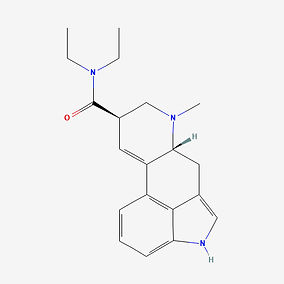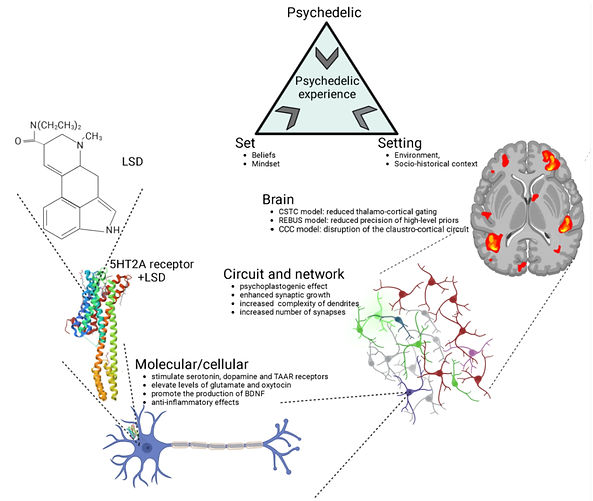LSD
Lysergic Acid Diethylamide
Common Names: Acid, Tabs, Blotter
Type: Ergolamine
Lysergic acid diethylamide (LSD) is a semi-synthetic psychedelic first synthesized in 1938 by Swiss chemist Albert Hofmann from ergot, a fungus that grows on rye and other grains. Derived from lysergic acid, the compound was later found to have powerful hallucinogenic properties, even at extremely small doses. LSD is active in the microgram range (with typical doses between 25–150 µg), making it one of the most potent psychedelics known. The effects, often described as a “trip,” can include vivid visual distortions, altered perceptions of time and space, and synesthesia — where senses blend, such as “hearing colors” or “tasting sounds.” While LSD has long been used recreationally, it is also the subject of renewed scientific and therapeutic research today.
-Lysergic%20acid%20diethylamide_edited_ed.jpg)
Formula: C₂₀H₂₅N₃O

Mental Effects
-
Altered perception of time/space
-
Visual distortions
-
Enhanced emotions and introspection
-
Spiritual or mystical experiences
-
Users may see, hear, or feel things that are not real.
-
Distorted senses: Perception of shapes, sizes, colors, and sounds can be altered. Synesthesia, the "crossing over" of senses (e.g., "hearing" colors), can occur.
-
Changes in mood and thought: Extreme mood swings can range from euphoria and bliss to paranoia and panic attacks ("bad trips").

Potential Risks
-
Anxiety, paranoia, panic attacks
-
Impaired judgment, risk-taking behavior
-
Persistent perceptual changes ("flashbacks")
-
Rare: Hallucinogen Persisting Perception Disorder (HPPD)
-
Risk of triggering latent psychosis in vulnerable individuals

Legality
-
Schedule I drug (US)
-
Renewed research: Despite legal restrictions, scientific interest in LSD has increased since the 2000s. Preliminary studies have explored its potential therapeutic benefits for treating alcoholism, depression, anxiety, and cluster headaches, and as an aid in psychotherapy for terminally ill patients.
-
Breakthrough therapy: In 2024, the U.S. Food and Drug Administration granted breakthrough therapy designation to a form of LSD for generalized anxiety disorder.

Interesting Facts
-
Famous in 1960s counterculture movements
-
Research resurgence in modern psychedelic therapy
-
Studied for potential benefits in depression, anxiety, PTSD, end-of-life care

Harm Reduction Tips
-
Safe, comfortable setting ("set and setting")
-
Trusted, sober trip sitter present
-
Start with low dose
-
Avoid mixing with other substances
-
Stay hydrated, but don’t over hydrate

Physical Effects
-
Dilated pupils
-
Increased body temperature, heart rate, and blood pressure
-
Sweating
-
Sleeplessness
-
Loss of appetite
-
Dry mouth
-
Tremors

Physical Properties
State: In its pure form, LSD is a white, odorless, and slightly bitter crystalline powder.

Forms
-
Blotter paper: small, absorbent squares with designs (most common)
-
Liquid drops
-
Sugar cubes
-
Microdots (tiny tablets)
-
Gelatin squares ("window panes")
-
Capsules or dissolved into a liquid

Onset and Duration
Onset: 30–90 minutes after ingestion
Peak: 2–5 hours
Total duration: 8–12 hours
Mechanisms of Action
Pharmacology and Biochemistry

Banushi, B., & Polito, V. (2023). A Comprehensive Review of the Current Status of the Cellular Neurobiology of Psychedelics. Biology, 12(11), 1380. https://doi.org/10.3390/biology12111380
References


